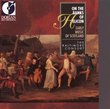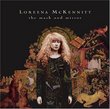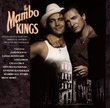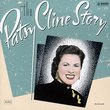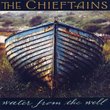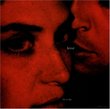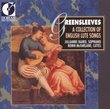| All Artists: Juan Gutierrez de Padilla, Andrew Lawrence-King, The Harp Consort Title: Missa Mexicana Members Wishing: 1 Total Copies: 0 Label: Harmonia Mundi Fr. Release Date: 10/8/2002 Album Type: Import Genre: Classical Styles: Opera & Classical Vocal, Historical Periods, Classical (c.1770-1830) Number of Discs: 1 SwapaCD Credits: 1 UPC: 093046729325 |
Search - Juan Gutierrez de Padilla, Andrew Lawrence-King, The Harp Consort :: Missa Mexicana
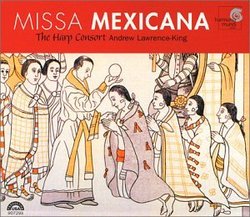 | Juan Gutierrez de Padilla, Andrew Lawrence-King, The Harp Consort Missa Mexicana Genre: Classical
"New Spain" comes roaring to life on Missa Mexicana. The disc's mainstay is a Mass setting by Juan Gutiiérez de Padilla, who was appointed maestro de capella at Mexico's Puebla Cathedral in 1629. Although Padilla was ... more » |
Larger Image |
CD DetailsSynopsis
Amazon.com "New Spain" comes roaring to life on Missa Mexicana. The disc's mainstay is a Mass setting by Juan Gutiiérez de Padilla, who was appointed maestro de capella at Mexico's Puebla Cathedral in 1629. Although Padilla was born in Andalucía, his work came to embrace Mexico: the rhythms of its dances, the exuberance of its song, and the textures of its popular instrumental ensembles (complete with guitars, percussion, and shawms). Padilla was not a pioneer in this regard; at the time, Spain's sacred music was also greatly influenced by secular sounds. But perhaps the greatest draw of this repertoire, as Andrew Lawrence-King shows off so well, is the tight interweaving of European, Native, and African cultures in Padilla's Mexico, and how he and his contemporaries utilized all of these cultural streams in their own work. Bolstered by an array of other compositions of the age, Lawrence-King makes a strong case for 17th-century Mexico as a cultural crossroads, not merely as a remote outpost of Spanish influence. One prime example is Santiago de Murcia's "Cumbées," with its call-and-response vocals, delicate, mbira-like instrumental interlude, and earthy drumbeat recalling West African music. Another is Padilla's own Christmastime negrilla, "A siolo flasiquiyo," which invites worshipers to dance the guacambe, canario, and villano to celebrate the Messiah's coming. As on his other recordings, harpist and conductor Andrew Lawrence-King has brought together a host of today's most respected early music specialists for this trip to Mexico, including soprano Ellen Hargis, bass Paul Hillier, and gamba player Hille Perl. Lawrence-King himself performs on the Spanish harp, organ, and psaltery. As one might expect from such a gathering, the ensemble is top notch, in both technical expertise and musicianship. The singers (and instrumentalists) are equally comfortable in both Missa Mexicana's religious and earthly spheres, moving from a Gloria to a bawdy song with ease. --Anastasia Tsioulcas Similarly Requested CDs
|
Member CD ReviewsReviewed on 10/23/2010... I cannot say how much I love this Missa Mexicana: a sung mass with a Mexican rhythm. I keep it next to my copy of the Missa Luba, the African "version" : also completely superb, full of African rhythms and drums.
CD ReviewsA joyous 17th century multicultural jam session! Joy Fleisig | New York, NY United States | 01/28/2004 (5 out of 5 stars) "With 'Missa Mexicana' Andrew Lawrence-King and The Harp Consort provide one of the most joyous and thought-provoking discs of early music around. For an album that is 'crossover' in the best sense of the word, they take a 17th century mass by a Mexican composer and juxtapose it with the popular music that inspired it. All of this music is gorgeous, earthy, elegant, sensuous and passionate. Not surprisingly considering that many of the pieces are dances, it will undoubtedly set your toes tapping as well as have you humming. In addition to the standard harps, gambas, bass viols, etc., that one would expect from music of this period, The Harp Consort also includes Mexican guitars, bajons, and even a conch and a rain stick! The playing and the singing are superb, and Lawrence-King not only directs the ensemble but provides wonderful accompaniment on the harp and psaltery. The sheer joy everyone brings to the performance makes it seem like a particularly successful jam session, even though it is obvious just how much hard work and research has been put into it. Mexico in the 1600s was a rich mixture of ethnic groups and cultures, and its music reflects this. The main influence is Spanish Renaissance polyphony (Spain at this time was in its musical golden age - the 'siglo d'oro'), but there is also help from Portuguese immigrants, Native Mexicans (Mayan), and Africans from the Ivory Coast, Guinea, and Puerto Rico. As well, there is constant tension between the sacred and secular worlds.The core of this recording is a 'parody mass' (that is, the polyphony has been reconstructed from previously written motets) by Juan Gutierrez de Padilla, a Spanish composer who emigrated to Mexico and became the choir director of the Cathedral in Puebla in 1629. This work is radiant and lighthearted and although more formal than the other music on this disc, is still heavily influenced by dance rhythms. Unlike in many mass settings, phrases such as 'bonae voluntatis', 'credo' and 'confiteor' are repeated as refrains. The accompaniment is also rather spare, relying primarily on guitars with occasional percussion. Each section of the mass is surrounded by popular songs and dances of the time which have lyrics based on religious themes, as was often done at the time to delight the worshipers - and assure their church attendance!Two tenors sing of goldfinches singing softly to the infant sun in 'Canten los jilguerillos', the vilancico (popular dance) that begins the CD. We later hear examples of one of the most popular musical forms of this time - the xacara, a particular type of vilancico normally in D minor and sung in backstreet Madrid dialects. 'Jacaras de costa', which includes the aforementioned conch shell and rain stick, is an instrumental variation in a major key and has the same theme as the vocal 'Los de queren de bon gusto' which it leads into. Like 'A la xacara xacarilla', this xacara, with the singers egging each other on ('vaya, vaya!' or 'vaya pues!') to keep dancing and adding more verses, is as much about the pleasure of making music ('Look at my nice new xacara which I will sing in Bethlehem!') as it is about the religious symbolism expressed within.Another common style was the Marizapalos, a romance which could have either a secular or sacred theme. 'Marizapalos a lo humano', a bawdy song about a priest's niece who goes to meet her lover, is full of sexual innuendo, but elevates physical love into something holy. In contrast 'Marizapalos a lo divino' speaks of the divine harmony of the seraphim and has a melody very reminiscent of the main theme from Joaquin Rodrigo's 'Fantasia alla gentilhombre' - I wouldn't be surprised if it was one of Rodrigo's sources! There is also a lovely instrumental variation ('Diferencias sobre marizapalos') on this theme.Some of the most interesting music on this disc doesn't have obviously 'Hispanic' origins. The 'Corriente Italiano', a broad, elegant and courtly instrumental dance of Italian origin, is made Spanish by syncopation, and is my favorite track on the disc. From Africa come 'Cumbees', a call and response (variations on the word 'cumbe') puctuated by heavy drums, and the negrilla, 'A siolo flasiquiyo' depicts a group of African musicians who are celebrating the baby Jesus, but have to be careful to not play so loud that they wake Him! Some of the lyrics here are admittedly a bit too 'minstrel show' for 21st century audiences, but the music is still gorgeous, particularly the exuberant refrain 'Tumbucutu, cutu, cutu'. The CD comes to a breathtaking finish with the guaracha 'Convidando esta noche', where the final, ecstatic 'Ay, ay, ay!' will linger long after it ends.The thick booklet is illustrated with skeletons to recall the Mexican 'Day of the Dead' tradition, and contains full Latin and Spanish texts and English and French translations, as well as websites if you want other languages. Lawrence-King contributes an essay detailing the historical background and structure of the music and lyrics. There is also a CD insert that indicates which musicians are playing in which selections, although it is a pity they do not identify the actual INSTRUMENTS played, as each musician plays several. 'Missa Mexicana' is music-making of the highest integrity and not to be missed. In addition to adventurous classical music lovers, I would also recommend this disc to people coming from the 'other side', that is those who may not be particularly fond of classical music but who like more 'traditional' Mexican and Latin American sounds. Either way, this is one of the most original, imaginative, and fun discs I've heard in a long time, and it deserves to be a huge bestseller." Wounderous Mexican Baroque, masterfully performed Joy Fleisig | 08/25/2003 (5 out of 5 stars) "Contrary to impression one would get from Ms. Moran's inexplicable review, Mexican music isn't merely Mariachi bands and other such folk music. The Baroque was also alive and well in Mexico and the country developed its own tradition of sacred music. This is an lively collection of Mexican Baroque music, centering around a setting of the mass from Puebla Cathedral. It proves a very interesting mix of European traditions and the traditions and rythmns encountered in Mexico. The recording also sports a nice variety of styles and tempi. The performances are excellent and spirited, musically and technically outstanding."
|

 Track Listings (16) - Disc #1
Track Listings (16) - Disc #1
